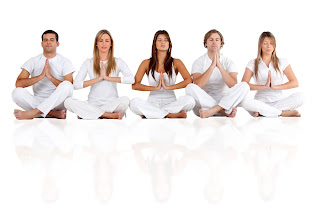Why Say Namaste?

Have you noticed that I say "Nasmaste" at the close of most of my Yoga classes? If so, do you say it too? Many students just parrot Namaste back as a matter of course, without knowing what it means. I know I used to way back when I worked up the courage to actually mumble Namaste in response to a teacher. That was, incidentally, a long time before I was confident enough to chant OM/AUM at any audible level. Whether you say Namaste at the close of your yoga class is up to you, but I thought I'd give a brief overview of what it means to me, and why I say it. As with a lot of things, you can find multiple meanings for the Sanskrit word Namaste. At its simplest, it is a greeting, to say hello. The word is made up of two Sanskrit words, with "Namaha" meaning "greetings" and "te" meaning "to you". Hence why Namaste is used by Indians multiple times a day. In the ancient Vedic texts the word "Namaha" is said to mean ...


